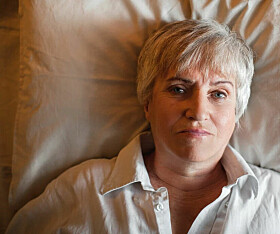
Society is spending more and more money on mental health. Why aren't we getting any better?
The proportion of the population with depression – the most common mental illness – has remained unchanged for more than 30 years. One professor believes that we need to think about the issue in a completely new way.
"Treatment helps. But its effects are unfortunately quite modest,” Arne Holte says.
He is a professor of health psychology and previously assistant director at the Norwegian Institute of Public Health (NIPH).
Holte believes that the time has now come to recognize that the enormous progress we have made in treating mental disorders has not affected the incidence of these disorders in society.
“It’s gotten easier to get treatment. More people are being treated. The quality of the treatments has also improved.”
“But the population isn’t getting any better,” he says.
Costs a lot
“We can’t treat our way out of this,” Holte says.
“Instead, we have to think in new ways,” he says.
Mental disorders do not just leave their mark in the form of illness and ailments in the individual and those closest to them. They also cost a lot of money.
Mental disorders now cost Norway around NOK 330 billion each year.
For most people, this is just a huge number. But if we say that this is what it would cost to build at least 1000 new, large school buildings every year, it becomes a little clearer that we’re talking about daunting sums.
Mental disorders are Norway's most expensive diseases.
“The loss of health from mental disorders among people of working age is greater than the combined loss of health from all cancers, cardiovascular diseases, COPD and diabetes,” says Holte.
“If we take mortality into account, the healthy years of life lost among people under age 75 are as great as deaths from all cancers combined.”
Why is treatment so expensive?
The early age of onset is one reason why mental health treatment is so expensive. Two out of three mental disorders start by the mid-teens, three out of four by the mid-twenties. And the first symptoms start even earlier.
“The age of onset for a diagnosis of depression is age 15, on average,” says Holte.
Another reason for the high cost is major functional impairment, which reduces education and the ability to work and is often accompanied by physical illness. This in turn leads to high welfare costs and premature death.
“Just think, among people with disability benefits aged 20 to 35, two out of three are now on benefits because of a mental disorder!” says Holte.
The wide distribution of mental disorders is a third reason for their high cost.
New studies indicate that 80 per cent of the population will have had at least one mental disorder before reaching age 40.
As with physical illness, it is not abnormal to have been mentally ill one or more times during our life.
Therapy is too expensive and ineffective
The costs of treating mental disorders only account for approximately 12 per cent of the societal costs of physical health issues.
Nevertheless, Holte believes that more treatment is not what we need to reduce the burden of disease on society. Just increasing the funding for treatment won’t help, he says.
“Of course we have the same right to treatment when we’re mentally ill as when we’re physically ill. But the primary aim of the new governmental mental health plan should not be to provide more therapy. Therapy is too expensive and has limited effectiveness. It also impacts people’s lives unequally.”
Start in kindergarten
Holte believes that efforts to tackle mental health should strive to strengthen our mental health and reduce the incidence of mental disorders. And by that he means everyone's mental health.
“We should prioritize broad actions like mental health-promoting measures that target the entire population, rather than disease-preventing measures that target high-risk groups in particular.”
“We should be prioritizing anxiety and depression, which are the country's most expensive health problems.”
“These disorders can be prevented. And then we should prioritize what we can prevent, rather than spending more money on less common and more serious diseases that we don't know how to prevent. Those illnesses need to be prioritized for treatment.”
Starting early is key. Holte believes we should focus on the very youngest before everyone else.
We have to start in health centres, in kindergartens and at school, according to the professor.

New project
Today, Norwegian kindergartens are required to address mental health, as established by the publicly adopted curriculum for all Norwegian kindergartens.
Kindergartens should support the child in coping with adversity in life. The children should be helped to become more robust. And they need to learn to recognize their own and other people's feelings, as laid out in Norway’s Framework Plan for Kindergartens.
“However, very little is actually specified in terms of how the kindergarten staff should do this,” says Ingunn Størksen.
She is a professor of educational psychology at the Norwegian Centre for Learning Environment and Behavioural Research at the University of Stavanger.
Størksen heads a large research project which aims to help with this very issue.
The project aims to specify what the kindergarten staff can do to improve young children's mental health – children who will later become teenagers and then adults.
Not thinking preventively
Holte would like to talk more about prevention.
“Society has made an enormous effort to prevent cardiovascular diseases. We’ve seen that it’s worked really well. Now we’re doing the same with COPD, diabetes and cancer.”
“But we spend almost no money on preventing mental disorders. We're just trying to repair the damage.”
“These are disorders that we now know come early in life,” he says.
“Cancer and cardiovascular diseases usually occur towards the end of life.”
Shameful
“The Norwegian Ministry of Health and Care Services spends 0.3 per cent of a budget of more than NOK 400 billion on mental health promotion and preventive measures for children and young people. This includes both physical and mental health,” Holte says. “It’s shameful.”
Holte has set up some calculation models for what we could achieve with systematic prevention.
If we just implemented what we know from the last 20 years of research on mental health promotion and preventive measures, he estimates we could probably halve the incidence of common mental disorders.
Surveying at health centres
The World Health Organization (WHO) has come to the same conclusion. They have gathered research and figures suggesting that good prevention could make it possible to halve the most common mental disorders in society.
The WHO has also recommended that Norway and other countries introduce broad surveying and follow-up of psychological problems among pregnant women and mothers of infants.
Holte suggests that the new Norwegian mental health plan take this recommendation into account.
“We should do this surveying simply because we know that around one in eight mothers will have a depressive episode within two years of giving birth. It’s bad for the mother, but it’s also an important risk factor for the child's development,” he says.
It’s a provocative notion that pupils should be able to handle a ball, but not handle emotions.
Don't know who they are
We don't know who these mothers are. The risk is just as high among women who have never had depression as among those who have.
For that reason, we should introduce measures to cover everyone, says Holte.
“Studies from the UK show that if nurses were trained to become good at preventing and detecting signs of depression among new mothers, the incidence of depression could be reduced by almost a third.”
He believes this will be an important preventive measure, but not just for the mother.
“Reducing depression in the mother can prevent psychological risk development in the child. We know that having a depressed mother has an effect on children over time.”
Many children and teens have mental health struggles
A recently published report from the NIPH shows that around seven per cent of children aged four to fourteen have a mental illness. This means that they have received a diagnosis.
Far more children and young people state in surveys that they have mental health problems. The term ‘mental health problems’ is used when the level of symptoms interferes with how we function in daily life.
Twenty-five per cent of girls in lower secondary school and 29 per cent in upper secondary school report that they experience a high level of psychological problems.
Among boys, nine per cent in lower secondary school and twelve per cent in upper secondary school report the same.
What about school?
These numbers are worrisome.
Mental health in schools has therefore been an important issue for the prime minister in Norway, the minister of health and care services and several ministers of education for several years.
“Time after time, they’ve promised to introduce mental health knowledge, attitudes and skills into the schools,” says Holte. “But they didn’t want it to be a separate subject. Instead, we’ve been given an interdisciplinary topic called Public Health and Life Skills that includes mental health.”
Holte has systematically reviewed the curricula in all subjects at all age levels in Norwegian schools.
He has been looking for mental health competence goals. “I can't find any,” he says.
We learn how many teeth we have in our mouth, but not how many feelings we have in our stomach. We learn how the heart and lungs work, but not how thinking develops or what governs our behaviour.
Political bluffing
Mental health is our ability to think rationally, manage our emotions and behaviour, and maintain good relationships with others.
Holte says none of the competence goals, which define what the pupils should be able to do, cover any of these things.
We learn how many teeth we have in our mouth, but not how many feelings we have in our stomach. We learn how the heart and lungs work, but not how thinking develops or what governs our behaviour.
“In my opinion, this is pure bluffing,” says Holte.
“The politicians have broken all their promises without blinking an eye.”
“Very few teacher education programmes include teaching about mental health. The teachers are left to their own devices when they have to teach children about mental health and deal with pupils who have mental health struggles. Those children can be found in every classroom,” he says.
The new mental health plan needs to make mental health a separate subject in school, he says.
“Pupils need to learn about themselves and how their feelings, thoughts, behaviour and social relationships evolve through the developmental stages. It could become pupils’ favourite subject,” Holte believes.
Room for local interpretation
Knut Gustav Andersen, acting director at the Norwegian Directorate for Education and Training, was presented with Holte's comments about mental health education in the school system.
Andersen replied that the competence targets in the applicable curricula were designed to be flexible.
“This means that teachers can freely include the topic of mental health in their teaching, even where it is not explicitly mentioned.”
This provides teachers with local and pedagogical freedom to choose the instructional content and how it should be organized and adapted to the individual group of pupils, Andersen says.
For example, Andersen points out that in science class after the 4th grade children should be able to talk together about what physical and mental health are and discuss how lifestyle and well-being affect health. In social studies after the 10th grade, they should be able to reflect on how identity, self-image and their own boundaries are developed and challenged in different social settings.
Up to each individual teacher
Holte agrees that it is fine for mental health to be included in the different subject classes. But the competence targets are actually what govern the schools, not the descriptions of the subject areas.
“When teachers don’t have concrete competence goals to refer to, each individual teacher ends up having to shape their teaching locally.
He believes it’s not right that the competence targets are formulated so loosely in the other subject areas.
“Science and mathematics include loads of requirements for exact knowledge outcomes, like using exponential functions in maths and throwing a ball in physical education. As the curriculum stands now, this is regarded as more important life knowledge than skills and knowledge about thoughts, feelings, behaviour and social relationships.”
Is mental health investment worth it?
Few health policy measures give a greater financial return than investing broadly in prevention, Holte believes.
He has reviewed recent research literature on the cost-benefit and cost-effectiveness of mental health-promoting and preventive measures.
“The conclusion is clear. For every Norwegian krone we invest in such measures, society's savings are higher than almost any other societal investments we can make. Preventing mental health problems pays,” Holte says.
———
Read the Norwegian version of this article at forskning.no









































